Falen ka panda : Holika Dahan
India
Only a 5-second ritual.
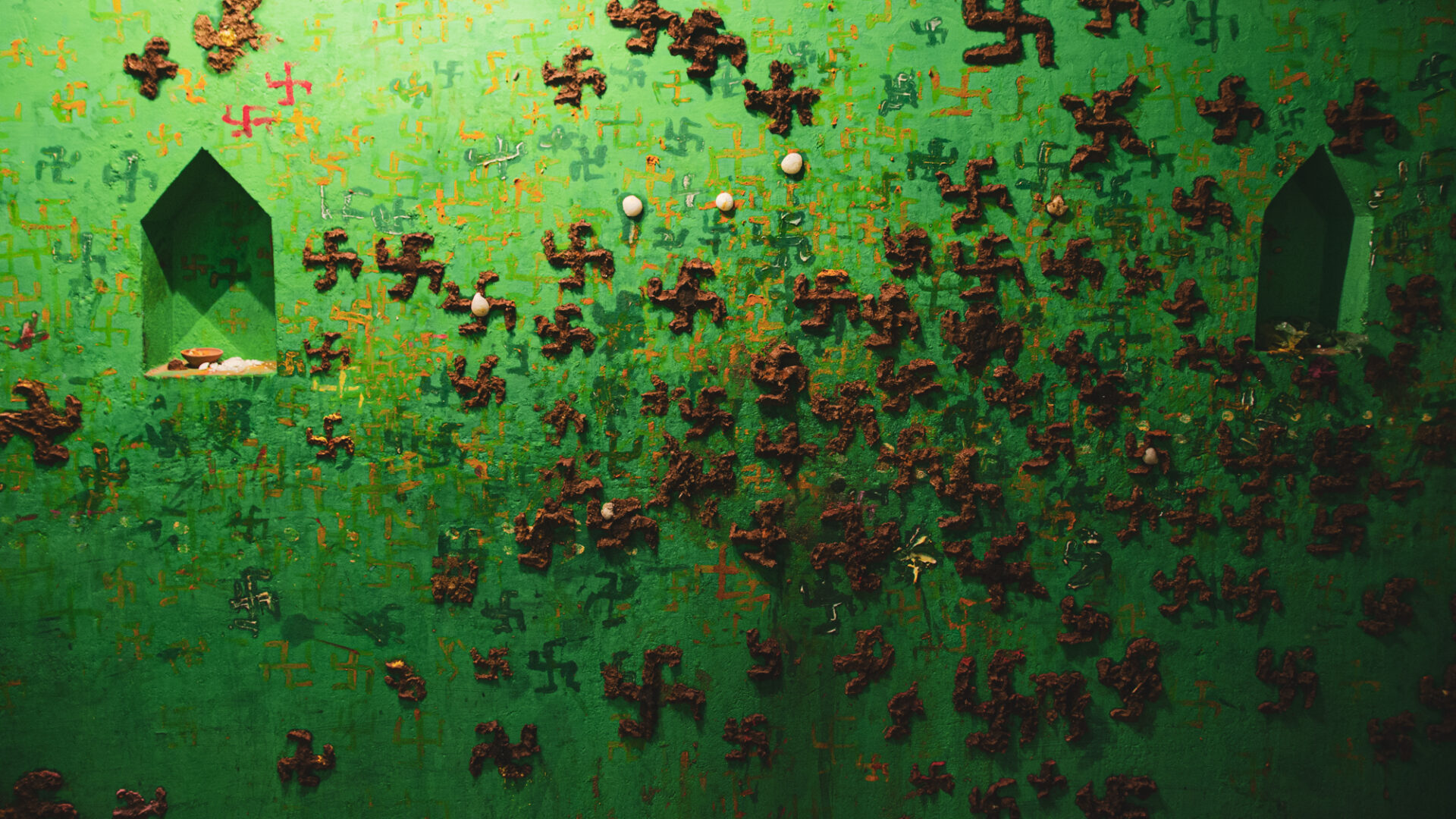
On this occasion, combustible materials such as dry grass and twigs are stacked to form the Holika pyre, which is ignited in the evening or night. This ceremonial fire represents the cleansing and purifying power that eradicates negativity and malevolence. The name "Holika Dahanan" itself is derived from the act of igniting this sacred fire.
This ritual can be seen throughout India.
The origin of Holika Dahanan is rooted in Hindu mythology. According to the legend, the demoness Holika possessed a seat endowed with sacred powers, allowing her to remain unscathed by fire. However, her nephew Prahlada, the son of the demon king Hiranyakashipu, was a devout worshiper of Lord Vishnu and resisted Holika's attempt to harm him.
Prahlada's unwavering faith and the divine protection he received led to a reversal of fortunes. In a twist of fate, Holika, who intended to harm Prahlada, found herself engulfed in the very fire she thought would shield her. This symbolic event signifies the liberation from demonic oppression and the ultimate victory of truth and virtue.
The fire in Holika Dahanan is considered sacred, representing the purging of evil forces and the purification of the surroundings. People gather around the Holika pyre, seeking blessings for a fresh start and celebrating the triumph of righteousness.
It's worth noting that in some regions, including parts of rural India, cow dung is traditionally used in the construction of the Holika pyre. This practice is rooted in cultural beliefs that consider cow dung as a purifying substance. The inclusion of cow dung in the pyre is believed to enhance the sanctity of the fire and symbolize the renewal of life and fertility. Thus, Holika Dahanam reflects not only the spiritual aspects of Hinduism but also the diverse cultural practices associated with the celebration.
And in the small rural village of Falen on the outskirts of Mathura, an astonishing Holika takes place.
The name of that ritual is called "Falen ka panda."
*About the Photo
A Swastika drawn on the temple wall using cow dung. The Swastika (卍) symbolizes good fortune in Sanskrit and is used as an auspicious emblem. Additionally, cow dung holds sacred significance in Hindu culture, embodying various symbolic meanings such as purification, prosperity, and protection from adversity.
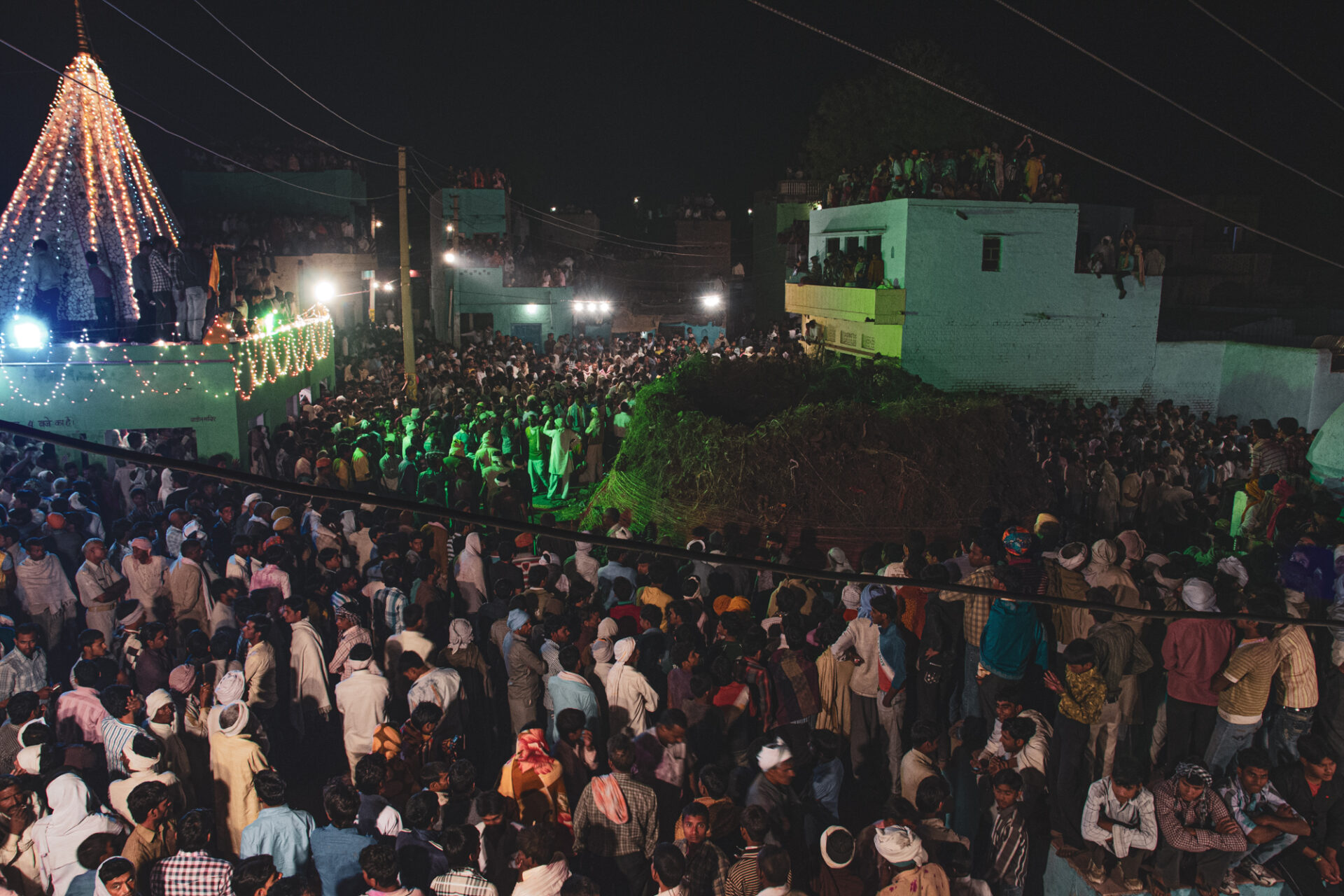
Despite the early hour of 4 AM, there's an incredible crowd, likely exceeding 3 meters in height. It's a gathering around the bundles of straw and cow dung, crafted for the Holika Dahan ritual. The green building to the left is the temple.
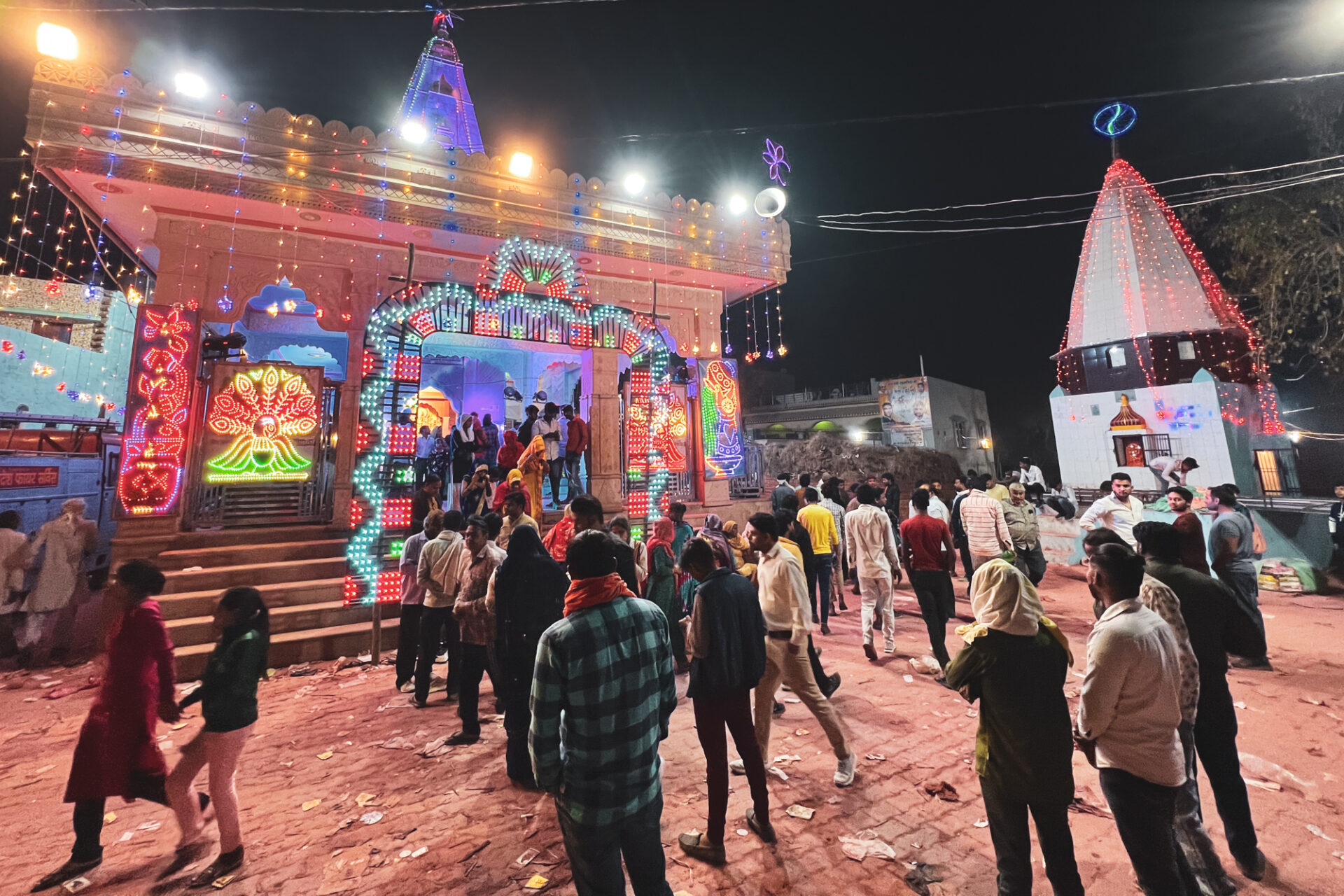
After the subsiding of the COVID turmoil, upon revisiting, the green temple had been refurbished into an impressive marble-clad structure. In the past, it had a sense of being a quietly conducted rural ritual, but recently, perhaps due to media coverage, the presence of foreign photographers has become more noticeable.
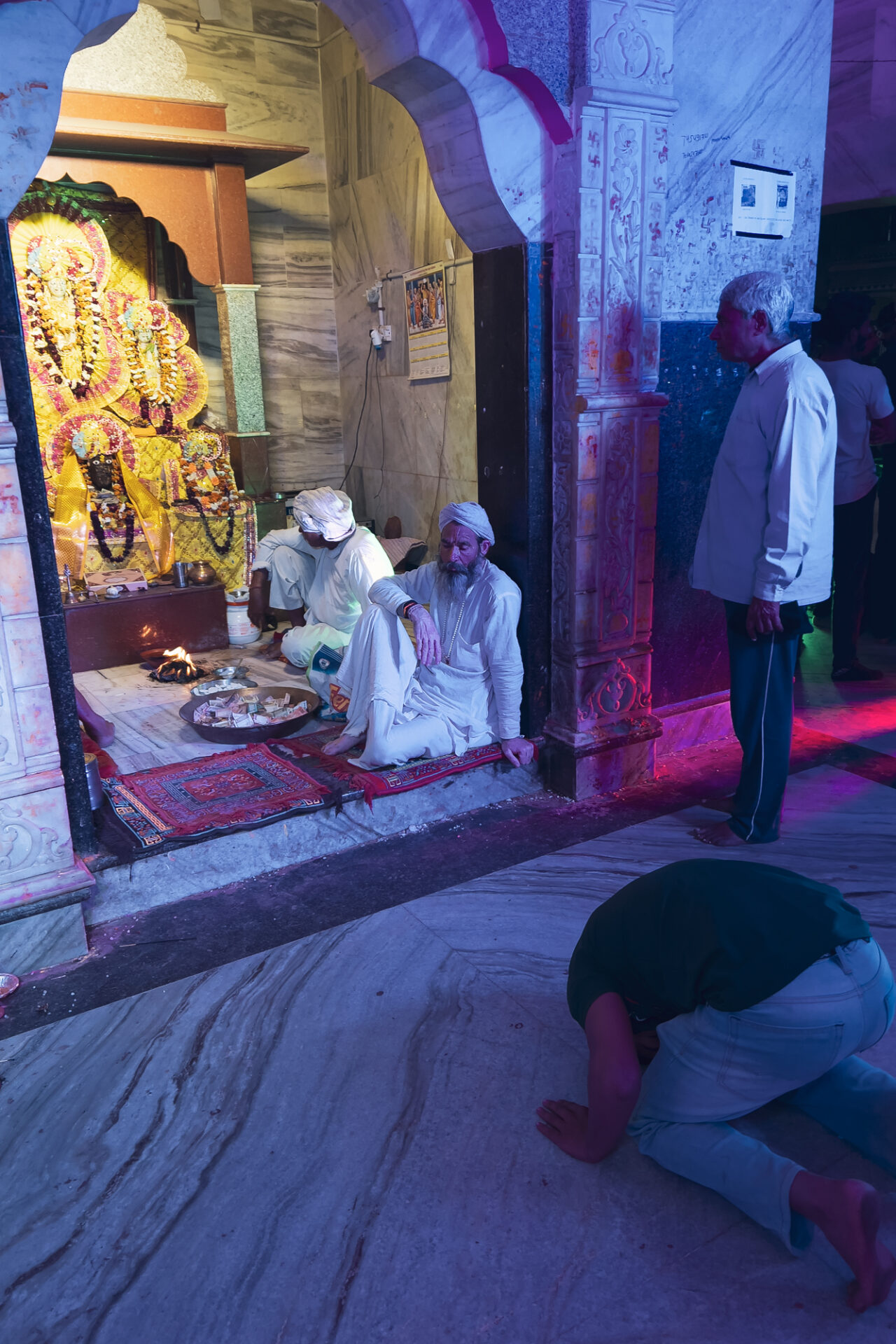
He, who is in the background, is the protagonist of this ceremony.
Although we can only witness it for four seconds, the fasting and purification rituals have been going on for several days.
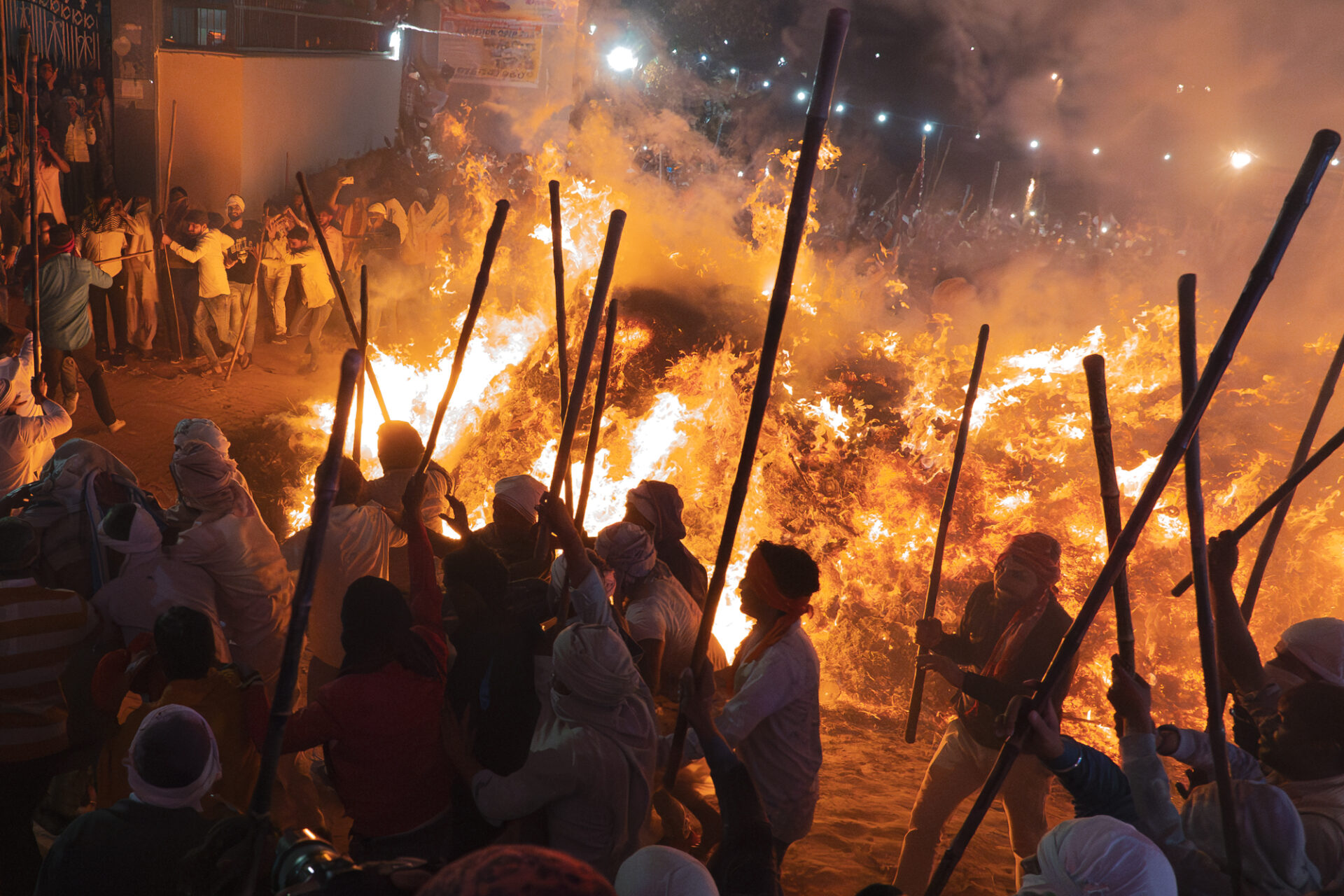
The flames roar intensely after ignition, and people scramble away from the heat. Once the flames stabilize, the firewalking begins.
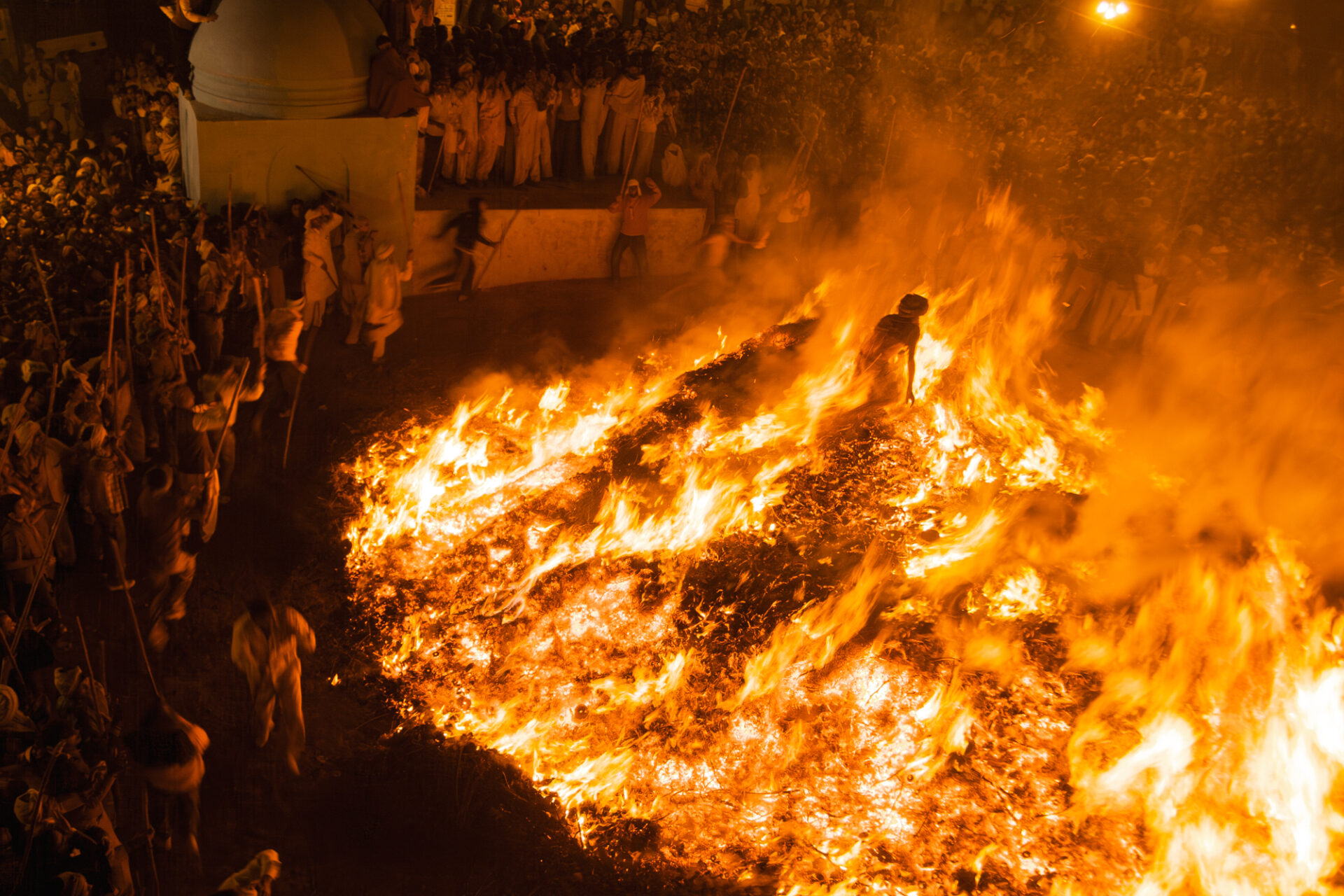
After purifying oneself in the nearby pond, the firewalking ceremony begins.
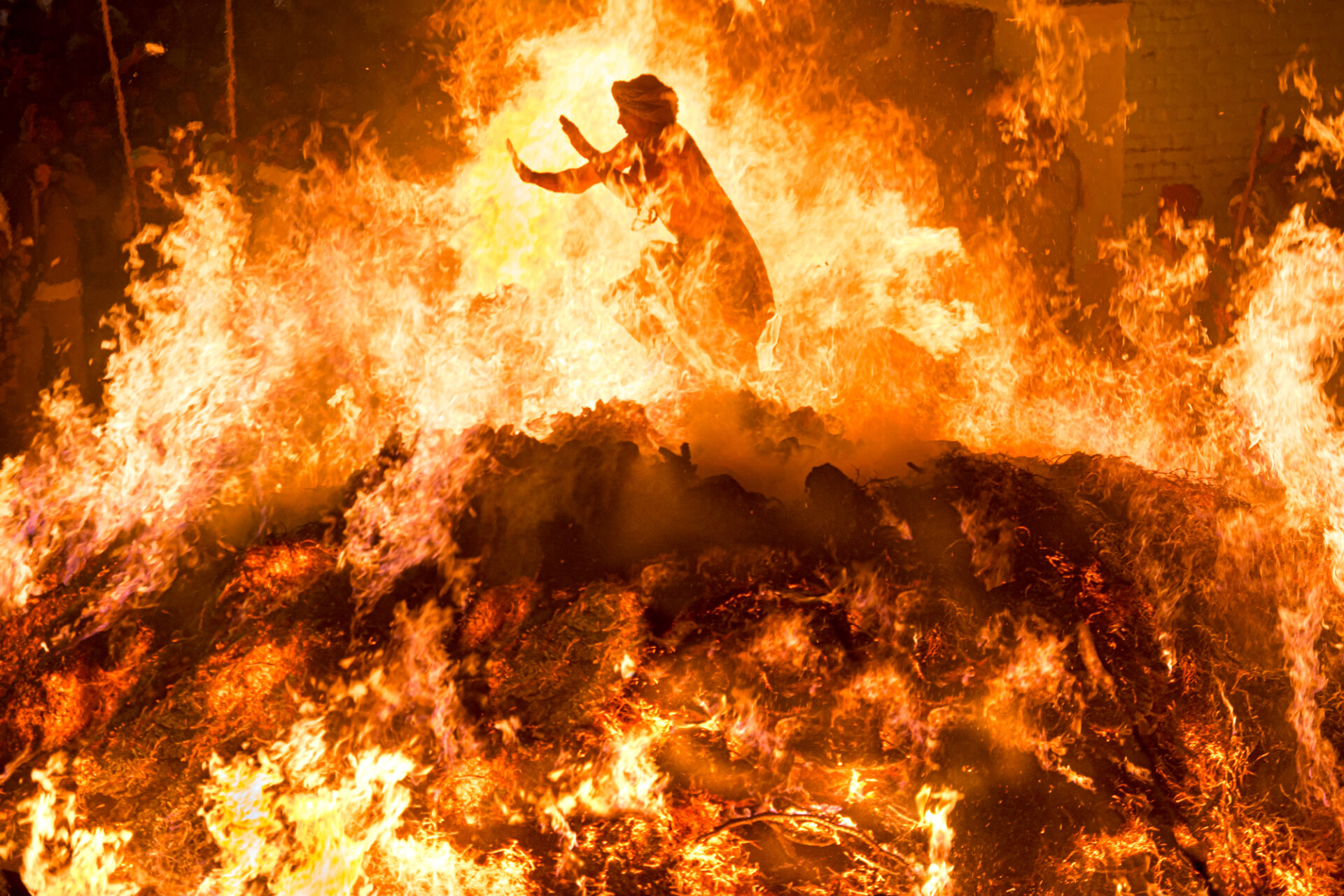
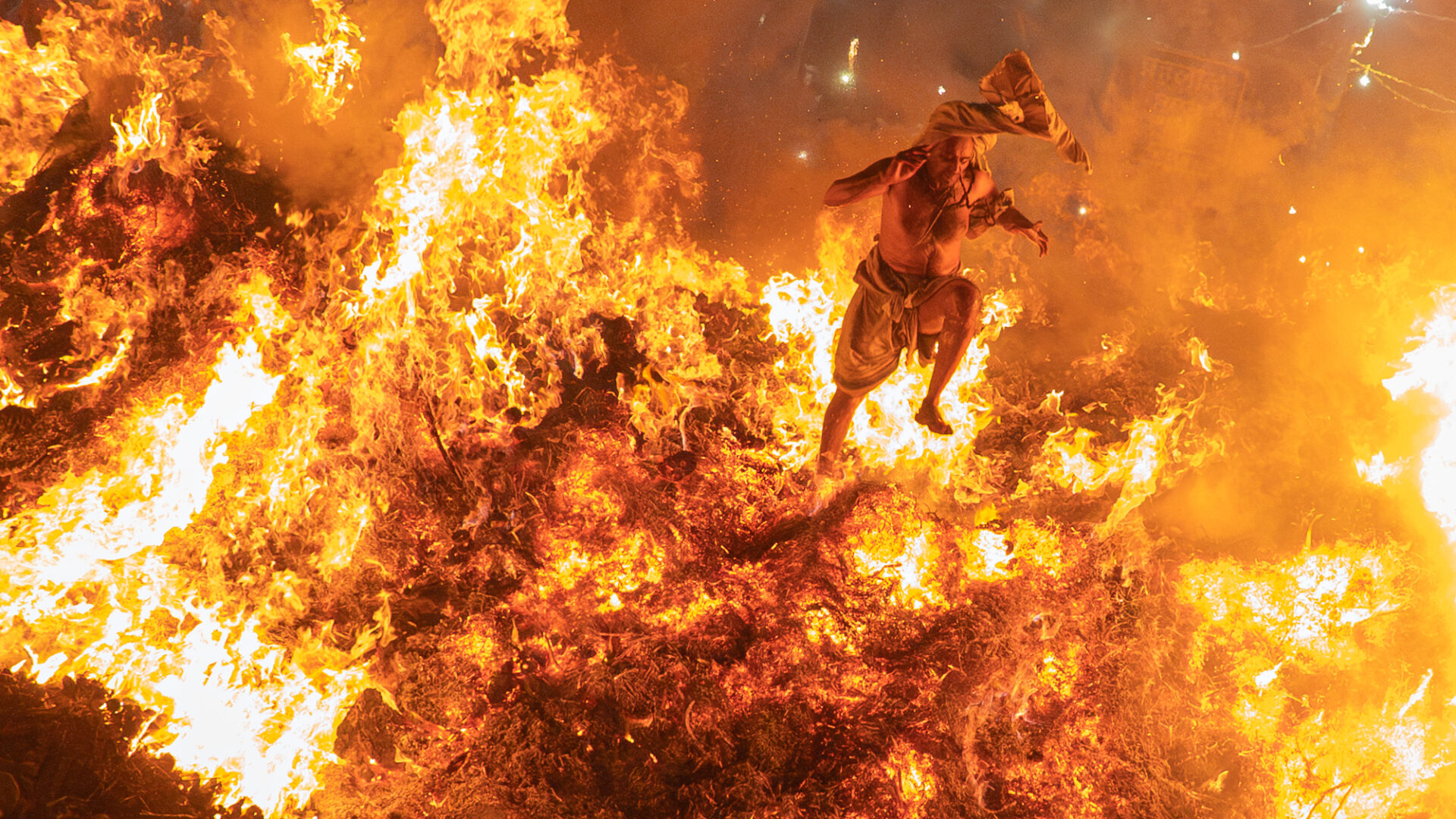
Only Brahmin men can perform firewalking.
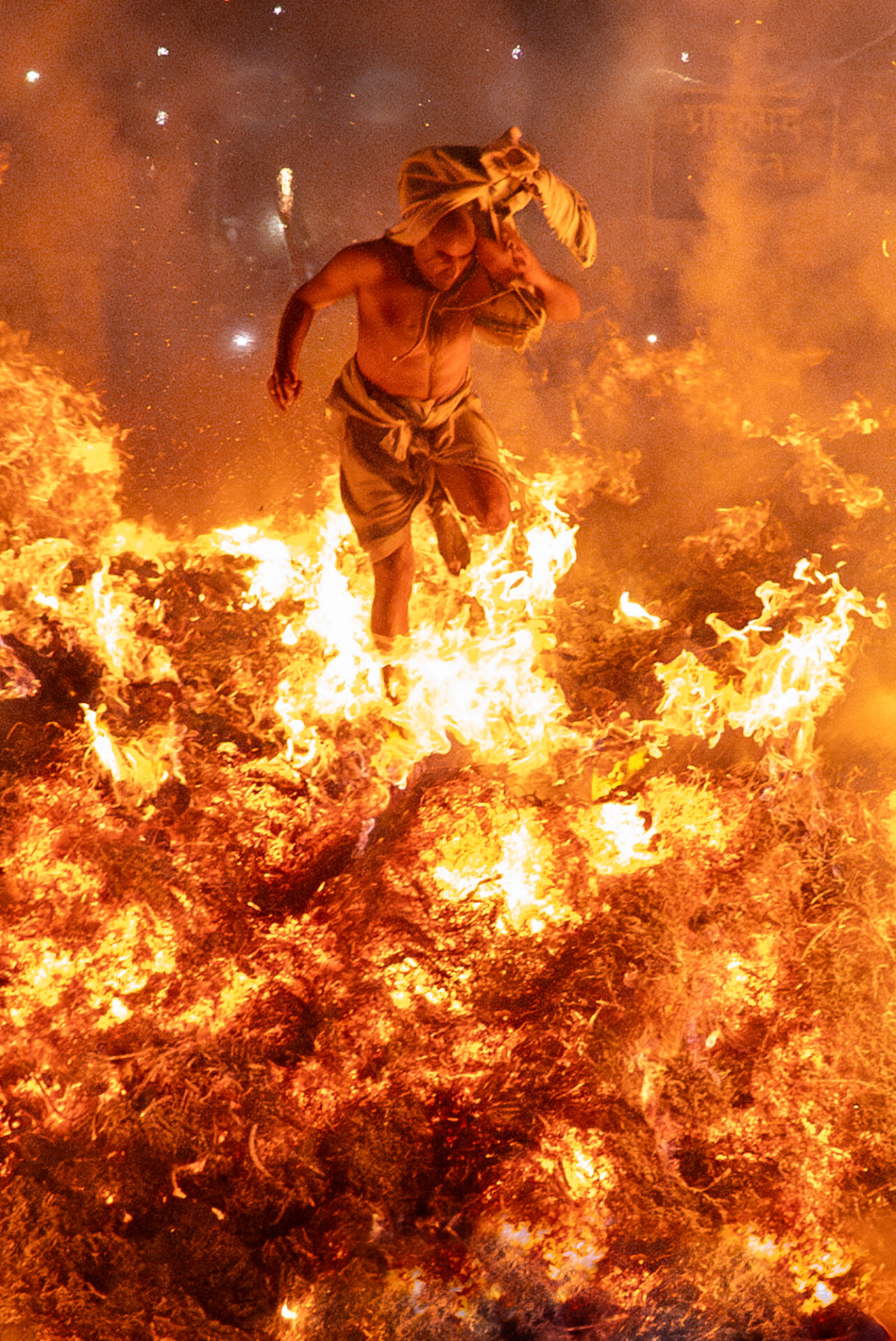
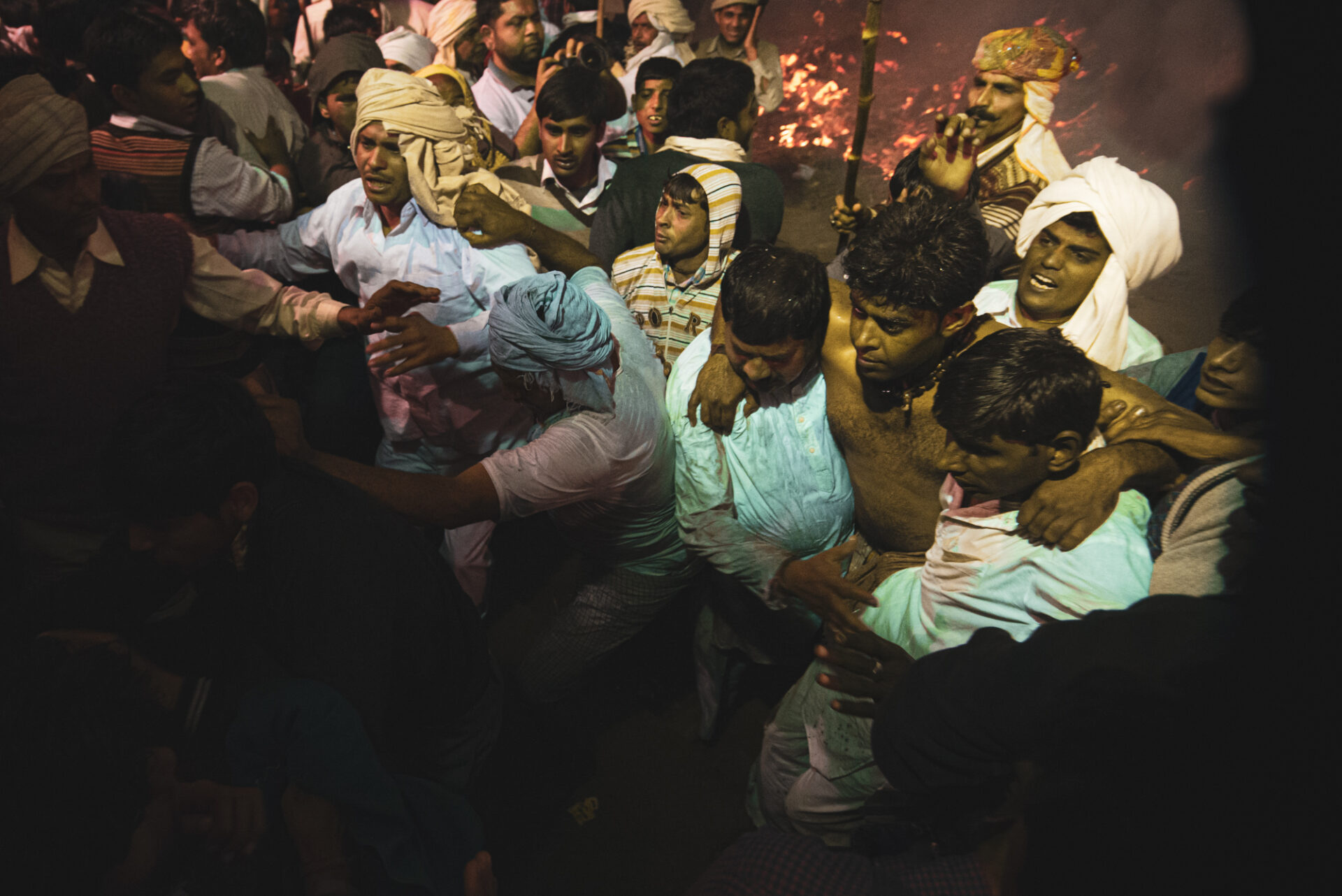
After completing the firewalking, a young man is carried by those around him. He emerged unscathed with only minor burns.
At 4 AM, the biting cold and lingering drowsiness are instantly blown away by the rising flames. In the Holika Dahan ritual, a massive bonfire made of straw and cow dung is set ablaze, and the heat is so intense it feels like your skin might burn. Every year, unsuspecting spectators who try to watch from the front row are forced to retreat in panic due to the overwhelming heat. In such an environment, finding a safe yet compelling position to capture powerful photographs is always a serious challenge.
During the fire-walking ritual, a single man runs through the blazing straw pyre. The footing is extremely unstable, and there is a real risk of tripping or falling to one’s knees in the middle of the flames. When I first photographed this festival back in 2010, I witnessed such a moment—one man lost his balance and fell to his knees in the heart of the burning fire. I was overcome with shock and fear, thinking I might be witnessing someone burn to death. That moment remains the most tense and terrifying I’ve ever experienced while photographing.
As dawn breaks and the sun begins to rise, Holi—the most colorful and lively Hindu festival in India—officially begins.
Over the years, I’ve taken countless photos related to Holi, and even now, I’m still reflecting on how best to shape the concept and struggling with which images to select from my extensive archive.
